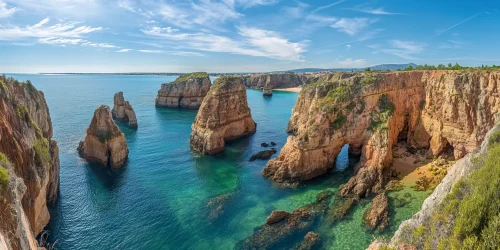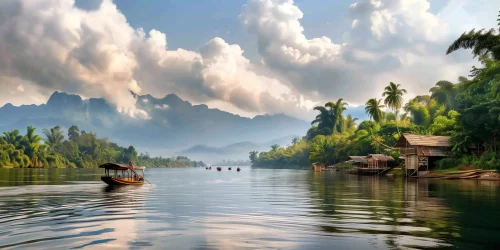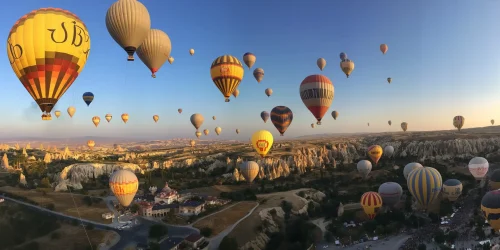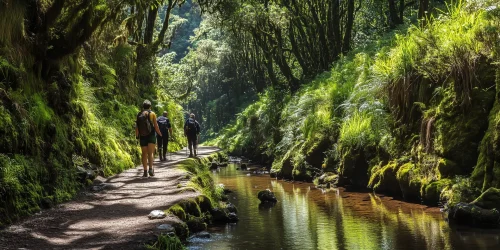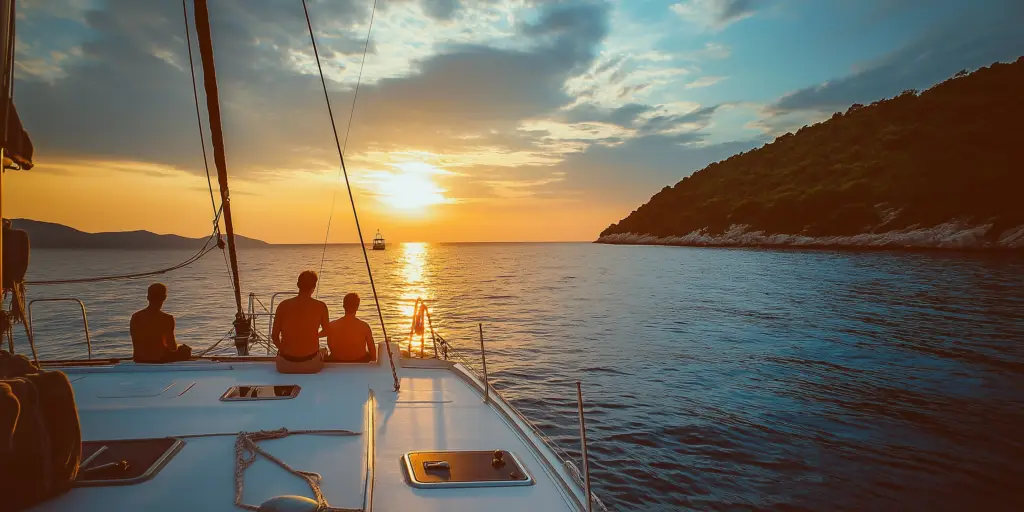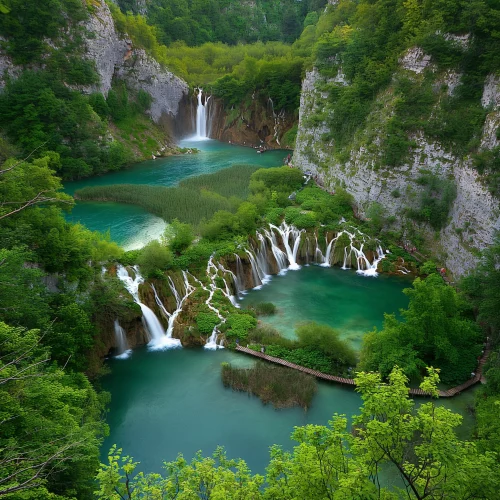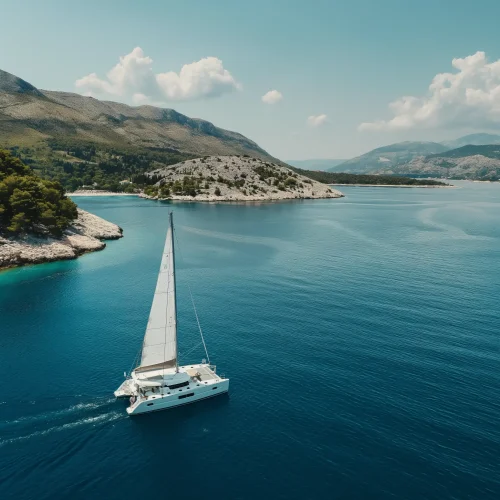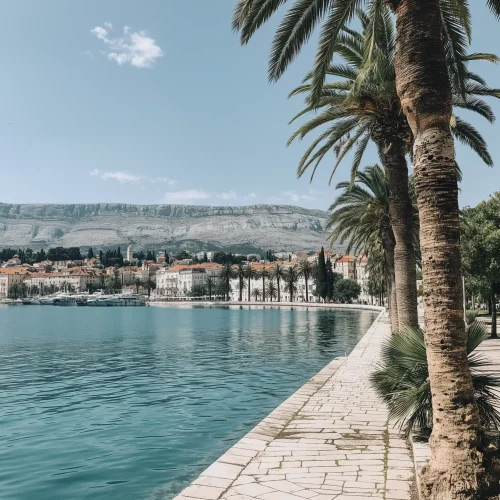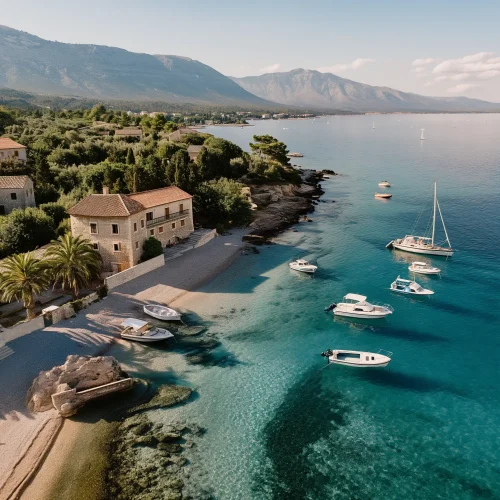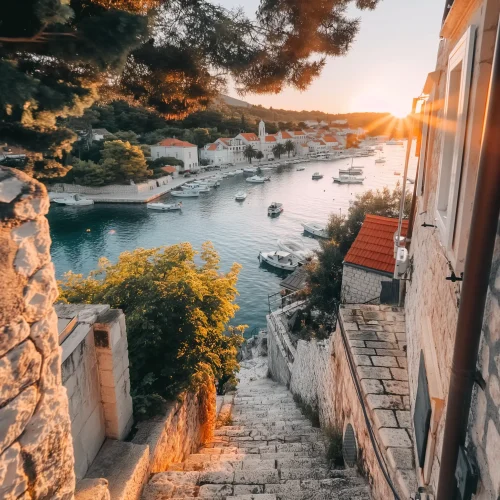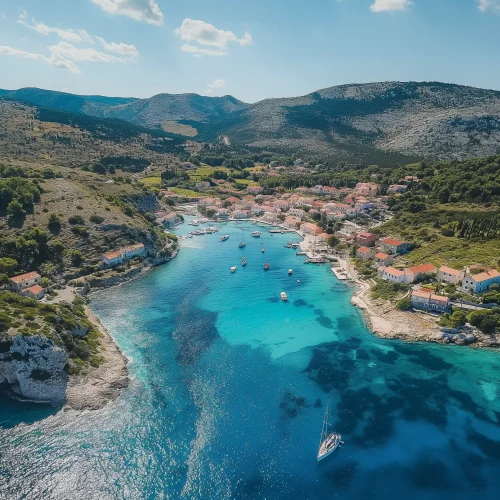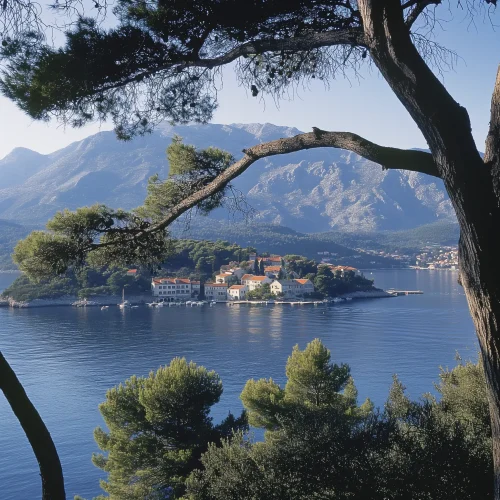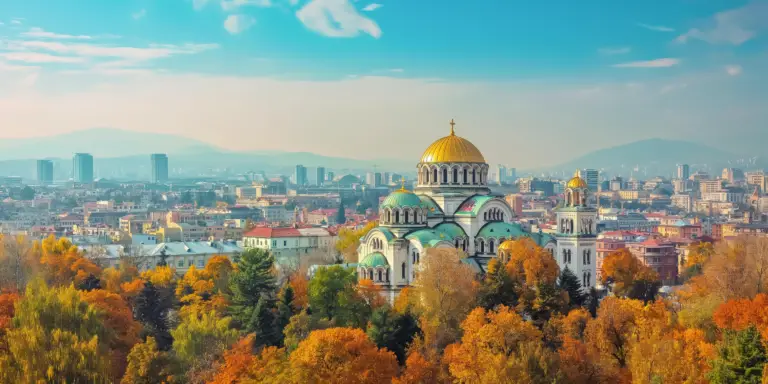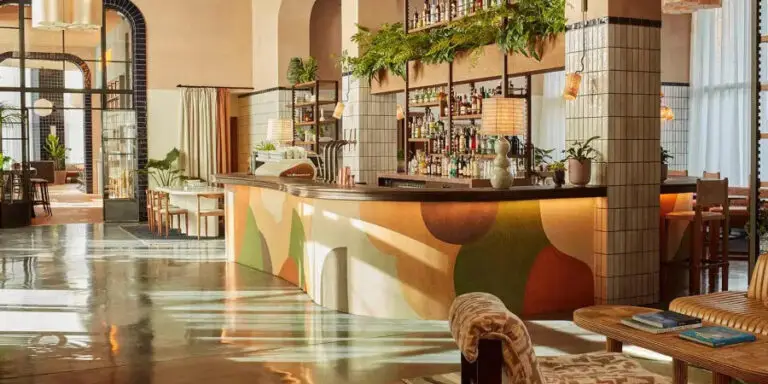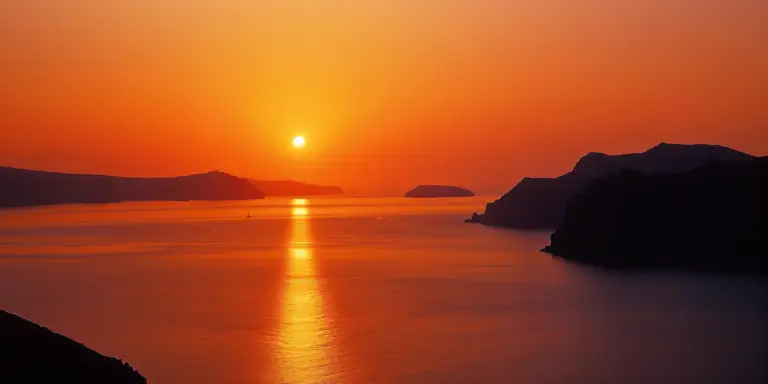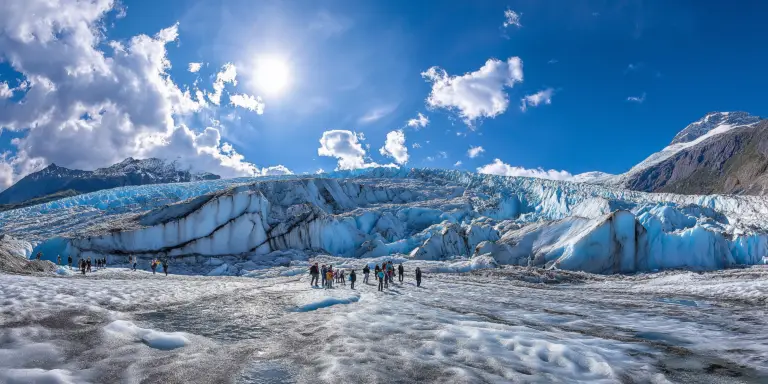I always dreamed of sailing the Croatian coast, and this summer, it finally happened. Seven days, a 40ft catamaran, and a crew of friends ready for adventure. The plan was simple: start in Split, island-hop our way south, and soak up as much of the Adriatic as we could before returning.
Day 1: Split to Brač
The first thing I learned? Nothing beats the feeling of stepping onto a boat that will be your home for a week. The catamaran had plenty of space, with four cabins, a lounge area, and—most importantly—room to stretch out on the deck with a drink in hand.
We set off from Split, the sun reflecting off the deep blue water as we left the harbor behind. Our first stop was Brač, home to one of Croatia’s most famous beaches, Zlatni Rat. The golden spit of sand constantly shifts with the tide, and from the deck, it looked like something off a postcard.
After anchoring near Bol, we wasted no time jumping into the water. The Adriatic was warm and clear, perfect for swimming. Later, a short walk into town led us to a cozy konoba (tavern), where we feasted on fresh grilled fish and a bottle of Plavac Mali—a local red wine that quickly became a favorite.
Day 2: Brač to Hvar
Morning started with coffee on deck, the kind of moment that makes you appreciate life at sea. After a quick breakfast, we hoisted the sails and made our way to Hvar. The approach was stunning—stone buildings climbing up the hillside, a fortress watching over the harbor, and boats of every size anchored along the shore.
Hvar is known for its nightlife, but before things got lively, we took a dinghy over to the Pakleni Islands, a cluster of smaller islets with hidden beaches. One of them, Mlini Beach, felt like a private paradise.
Back in Hvar Town, we climbed up to Fortica, the fortress overlooking the harbor, just in time for sunset. Below, the terracotta rooftops glowed in the evening light, and our boat looked tiny in the bay. Dinner was at a restaurant tucked away in a narrow alley, where we shared a plate of black risotto—a squid-ink specialty that tasted far better than it looked.
As the night stretched on, we found ourselves at Carpe Diem, the legendary beach club where music, cocktails, and open-air dancing carried us well past midnight.
Day 3: Hvar to Vis
A slow morning (thanks to the previous night’s adventures) led to a late departure. Luckily, the sail to Vis wasn’t long. The moment we arrived, we could tell this island was different. Less polished than Hvar, but in a good way—no mega yachts, no crowds, just an authentic, laid-back charm.
Vis was closed to foreign visitors for decades due to its military significance, and that isolation helped preserve its old-world feel. We docked in Komiža, a sleepy fishing village with stone houses and a relaxed vibe.
One of the must-see spots near Vis is the Blue Cave on Biševo Island, so we hopped on a local boat tour. Inside the cave, sunlight refracts through an underwater opening, bathing everything in an eerie, glowing blue. Photos don’t do it justice.
Back on Vis, we found a waterfront restaurant that served peka, a slow-cooked dish of lamb and vegetables baked under a bell-shaped lid. By the time we finished dinner, we were fully embracing island time—no schedules, just good food, good wine, and the sea.
Day 4: Vis to Korčula
With calm seas and a steady breeze, we had the perfect sailing conditions for the longer stretch to Korčula. As we approached, the medieval walls of Korčula Town came into view, looking like a miniature Dubrovnik.
Wandering through the Old Town felt like stepping back in time—narrow stone alleys, hidden courtyards, and the occasional glimpse of the sea between buildings. The island is known for its Grk wine, so naturally, we had to try some. A small family-run winery outside town poured us generous glasses while explaining why this particular grape only grows here.
Korčula is also famous for its Moreška sword dance, a centuries-old performance that plays out like a battle between two rival kings. Watching it under the stars, with the sound of clashing swords echoing through the square, was something special.
Day 5: Korčula to Mljet
By now, the rhythm of life on the boat had fully set in—wake up, swim, sail, explore, repeat. Our next destination was Mljet, an island covered in dense green forests. Half of it is a national park, making it one of the most unspoiled places we’d visited so far.
We anchored near Pomena and rented bikes to explore the park. Two saltwater lakes, Veliko Jezero and Malo Jezero, sit at the island’s center, their calm waters perfect for a mid-day swim. On a small islet in the middle of the larger lake, a Benedictine monastery stood surrounded by pines, looking like something straight out of a fairytale.
Dinner on board that night was simple but perfect—fresh bread, local cheese, olives, and a bottle of wine as the sun dipped below the horizon.
Day 6: Mljet to the Elaphiti Islands
Our second-to-last day brought us closer to Dubrovnik, with a stop at the Elaphiti Islands, a small archipelago just off the coast. These islands are less developed, with sleepy villages and quiet beaches.
We anchored near Šipan, the largest of the group, and spent the afternoon snorkeling in a hidden cove. A local fisherman waved us over and, in a mix of Croatian and hand gestures, offered to sell us some fresh-caught fish. That night, we grilled them on the boat, with nothing but the sound of the waves around us.
Day 7: Elaphiti Islands to Dubrovnik
The final sail brought us to Dubrovnik, the grand finale of our journey. Seeing the Old Town from the water was breathtaking—massive stone walls rising from the sea, guarding centuries of history.
We spent the day walking the city walls, admiring the views from the top, and getting lost in the maze of alleys. Game of Thrones fans in the group geeked out at familiar filming locations, while the rest of us just soaked in the history.
By evening, we were sitting at a cliffside bar, watching the last sunset of our trip with a round of Rakija (strong Croatian brandy) in hand. Seven days, countless swims, endless glasses of wine, and a lifetime of memories.
As we stepped off the boat for the last time, one thing was certain. This wouldn’t be our last time sailing the Adriatic.
